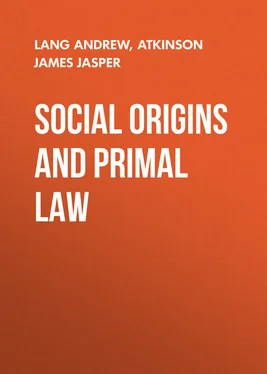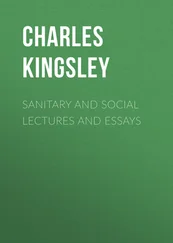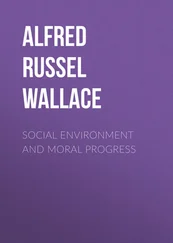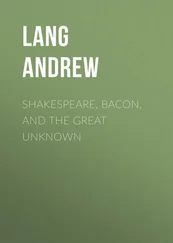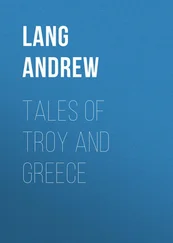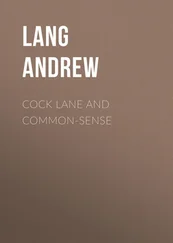Andrew Lang - Social Origins and Primal Law
Здесь есть возможность читать онлайн «Andrew Lang - Social Origins and Primal Law» — ознакомительный отрывок электронной книги совершенно бесплатно, а после прочтения отрывка купить полную версию. В некоторых случаях можно слушать аудио, скачать через торрент в формате fb2 и присутствует краткое содержание. Жанр: foreign_antique, foreign_prose, на английском языке. Описание произведения, (предисловие) а так же отзывы посетителей доступны на портале библиотеки ЛибКат.
- Название:Social Origins and Primal Law
- Автор:
- Жанр:
- Год:неизвестен
- ISBN:нет данных
- Рейтинг книги:3 / 5. Голосов: 1
-
Избранное:Добавить в избранное
- Отзывы:
-
Ваша оценка:
- 60
- 1
- 2
- 3
- 4
- 5
Social Origins and Primal Law: краткое содержание, описание и аннотация
Предлагаем к чтению аннотацию, описание, краткое содержание или предисловие (зависит от того, что написал сам автор книги «Social Origins and Primal Law»). Если вы не нашли необходимую информацию о книге — напишите в комментариях, мы постараемся отыскать её.
Social Origins and Primal Law — читать онлайн ознакомительный отрывок
Ниже представлен текст книги, разбитый по страницам. Система сохранения места последней прочитанной страницы, позволяет с удобством читать онлайн бесплатно книгу «Social Origins and Primal Law», без необходимости каждый раз заново искать на чём Вы остановились. Поставьте закладку, и сможете в любой момент перейти на страницу, на которой закончили чтение.
Интервал:
Закладка:
THE IDEAS OF MR. FRAZER HIS EARLIER THEORY
It cannot be concealed that my conjecture is opposed to the mass of learned opinion, which represents the primary 'phratries' as the first exogamous bodies, and the totems in each as later subdivisions of the phratries. The writers who, like Mr. Fison, recognise that the primary subdivisions are themselves, in origin, totem divisions, do not (as I understand) regard these very ancient totem groups as already exogamous, before the institution of 'phratries.'
Again, turning from Australia to North America, we find Mr. Frazer, at least in one passage, on the side of the view generally held. Of the 'phratry,' in America, he says, 'the evidence goes to show that in many cases it was originally a totem clan which has undergone subdivision.' 91 91 Totemism , p. 60 (1889).
Many examples are then given of the North American 'phratries,' which include totem groups within them. 'The Choctaws were divided into two phratries, each of which included four clans' (totem kins); 'marriage was prohibited between members of the same phratry, but members of either phratry could marry into any clan of the other.' Among the Senecas, one phratry included the Bear, Wolf, Beaver, and Turtle totems: the other held the Deer, Snipe, Heron, and Hawk totems; just as in Australia. Among the Thlinkets and Mohegans, 'each phratry bears a name which is also the name of one of the clans' (totems) 'included in it;' Mr. Frazer adds, 'it seems probable that the names of the Raven and Wolf were the two original clans of the Thlinkets, which afterwards by subdivision became phratries.' 92 92 Totemism , p. 62.
This is precisely as if we were to argue that Matthurie and Kirarawa were the 'two original clans' of the Urabunna, 'which afterwards by subdivision' (into totem groups) 'became phratries,' or 'primary exogamous divisions.'
The objections to this theory, as advocated by Australian inquirers, apply to the American cases as interpreted here by Mr. Frazer. In the first place, how are we to conceive of a large tribe, like the Thlinkets, as originally containing only two totems, Raven and Wolf? 93 93 The people of New Britain group of islands are divided into two exogamous sets. The totems of these classes are two insects, but I incline to suppose that there are, or may have been, totem kins included within these totemic classes. Our informant, the Rev. B. Danks, regrets that he did not pay more attention to these matters. J. A. I. xviii. 281-294.
If we do take this view, we seem almost driven to suppose that, in exceedingly early times, the Thlinkets deliberately bisected themselves, for some reason, called one moiety Ravens, the other moiety Wolves, and then made the divisions exogamous. Or, perhaps, having two totems and only two, Raven and Wolf, they deliberately decided that members of neither group should marry within itself; but should always take wives from the other group. Later, the two tribes, Raven and Wolf, again deliberately subdivided themselves, or perhaps, as in Dr. Durkheim's view, Wolf threw off colonies which became five totem kins, and Raven threw off colonies which became five other totem kins.
Is it not more readily credible that, over a large extent of Thlinket country, many small local groups came, by an unconscious process (see 'The Origin of Totemism'), to bear each a separate totem name? The two most important local groups, Raven and Wolf, would inevitably each contain, by the working of exogamy and female kin, members of all the other totems which would array themselves, five in each chief group, Raven and Wolf, as I have conjectured in speaking of the Australian cases. 94 94 On the other hand, among the Mohegans, I can admit that Little Turtle, Mud Turtle, and Great Turtle may be deliberate subdivisions of the Turtle totem, now a phratry, but even this need not necessarily be the case; the different species of turtles being quite capable of giving names to different totems. I would not deny the possibility of the occasional segmentation of a totem group – far from it – but I doubt whether great tribes originally (and, as it seems, deliberately) first bisected themselves, and then cut up the two main divisions.
Again, I cannot believe that a tribe like the Thlinkets originally had but two totems, not yet exogamous, then made them exogamous, and then cut them up, or let them split off, into many exogamous totem groups. No motive is obvious: the people, by the theory, being exogamous already.
OBJECTIONS TO MR. FRAZER'S EARLY THEORY
We shall later see that Messrs. Spencer and Gillen appear to advance, but also to qualify out of existence, a theory of a motive for an exogamous bisection of earlier non-exogamous local totem groups. They practically explain away their own explanation of – the great bisection, but it rests, while it exists, on certain recently discovered facts, which, in turn, are fatal, perhaps, to any theory that a tribe had originally but two totems, which became 'phratries,' on being subdivided into other totems. The new facts accepted and theorised on by Mr. Frazer and Mr. Spencer, would make it seem perhaps impossible that a tribe like the Thlinkets should originally have possessed but two 'clans' or totems. The facts, as stated by Mr. Spencer, in 1899, are these, or rather, this is his hypothesis founded on his facts. 'In our Australian tribes the primary 95 95 My italics.
function of a totem group is that of ensuring, by magic means, a supply of the object which gives its name to the totem group.' 96 96 J. A. I. , N.S. i. 278.
Mr. Frazer says, 'in its origin Totemism was, on our theory, simply an organised and co-operative system of magic… Each totem group was charged with the superintendence and control of the particular department of nature from which it took its name…' 97 97 Ibid . p. 282.
But this is hardly the origin of Totemism, so long as we are not told how, or why, each totem group took its name from a department of nature. Had it the name, before it worked magic for its eponymous object, or did it take the name because it worked the magic?
Again, there are dozens of such departments, 98 98 Mr. Mathews counts thirty-four totems in the Dilbi , and as many in the Rupathin 'phratries.' Proc. Ray. Soc. N.S.W. xxxi. 157-158.
which implies the existence of dozens of organised and co-operative totem groups: not of an original poor pair of such groups alone. Can we believe that, on Mr. Frazer's earlier theory, the Thlinkets formed but two such groups, one 'charged with' the duty to mollify the Wolf, the other to take care of the interests of the Raven? Manifestly this is unlikely. I elsewhere oppose this theory of the magical Origin of Totemism, made at first to fit the case of the Arunta and cognate tribes. If organised co-operation in magic is the source of Totemism, we may be pretty confident that no tribe began by appointing one half of all its members to do magic to propagate ravens, and the other half to mollify wolves. This would indicate, in the magical and co-operative tribe, a most oddly limited and feebly capitalised flotation of the company – merely 'Wolf and Raven.' No tribe would select ravens as the article of food which most required careful propagation and preservation, even if the Wolf most demanded to be propitiated and mollified. The new Australian facts (whatever their interpretation) are fatal to the older idea that a tribe could have had only two original totems: an idea which we may perhaps regard as now abandoned, at least by Mr. Frazer.
Thus Mr. Spencer himself remarks that, in Arunta tradition, there were numbers of totem groups before the great dichotomous division was made. That is my own opinion: though I do not hold it for Mr. Spencer's reasons, or believe in any 'bisection.'
Читать дальшеИнтервал:
Закладка:
Похожие книги на «Social Origins and Primal Law»
Представляем Вашему вниманию похожие книги на «Social Origins and Primal Law» списком для выбора. Мы отобрали схожую по названию и смыслу литературу в надежде предоставить читателям больше вариантов отыскать новые, интересные, ещё непрочитанные произведения.
Обсуждение, отзывы о книге «Social Origins and Primal Law» и просто собственные мнения читателей. Оставьте ваши комментарии, напишите, что Вы думаете о произведении, его смысле или главных героях. Укажите что конкретно понравилось, а что нет, и почему Вы так считаете.
